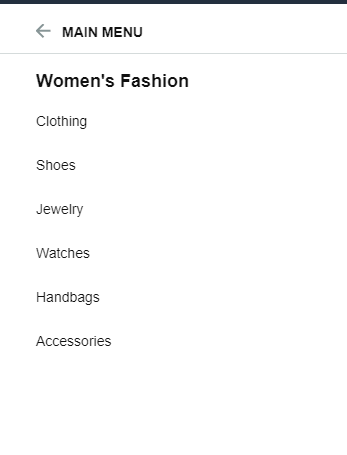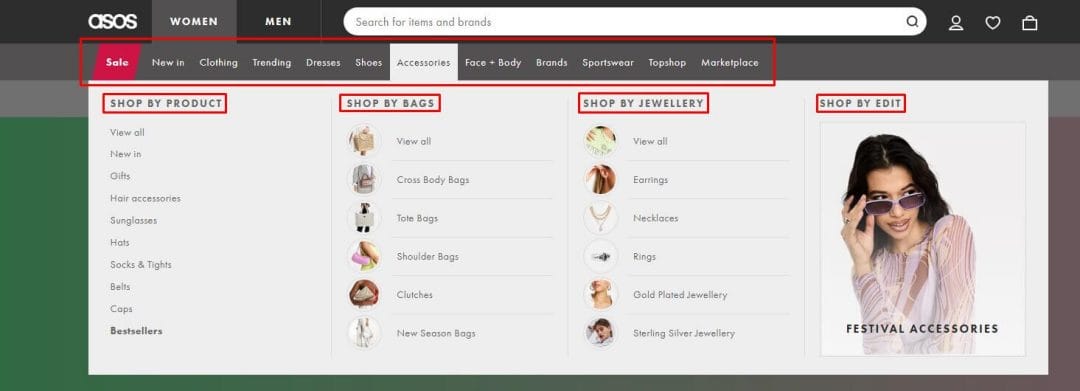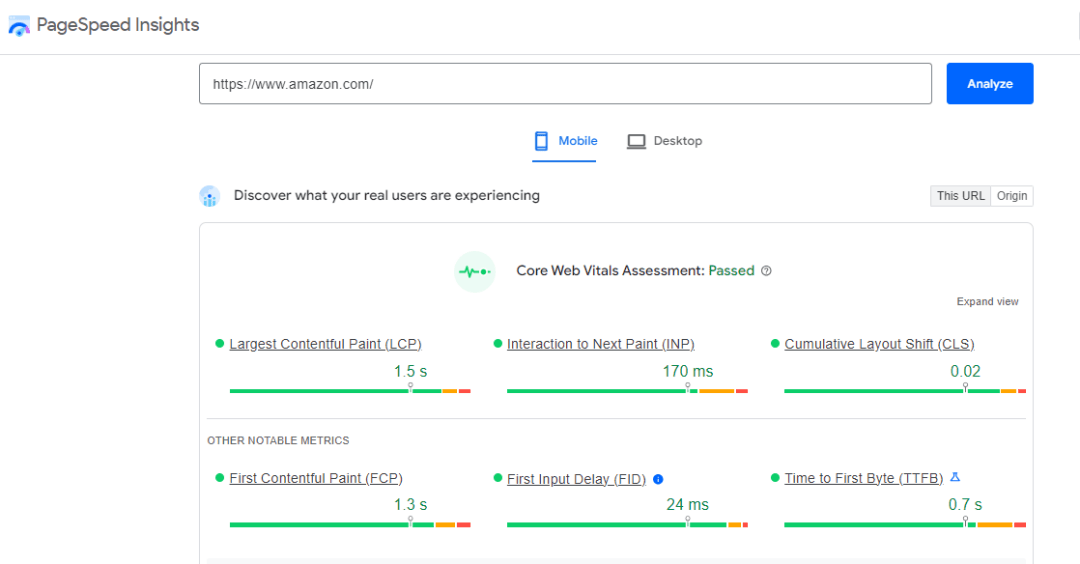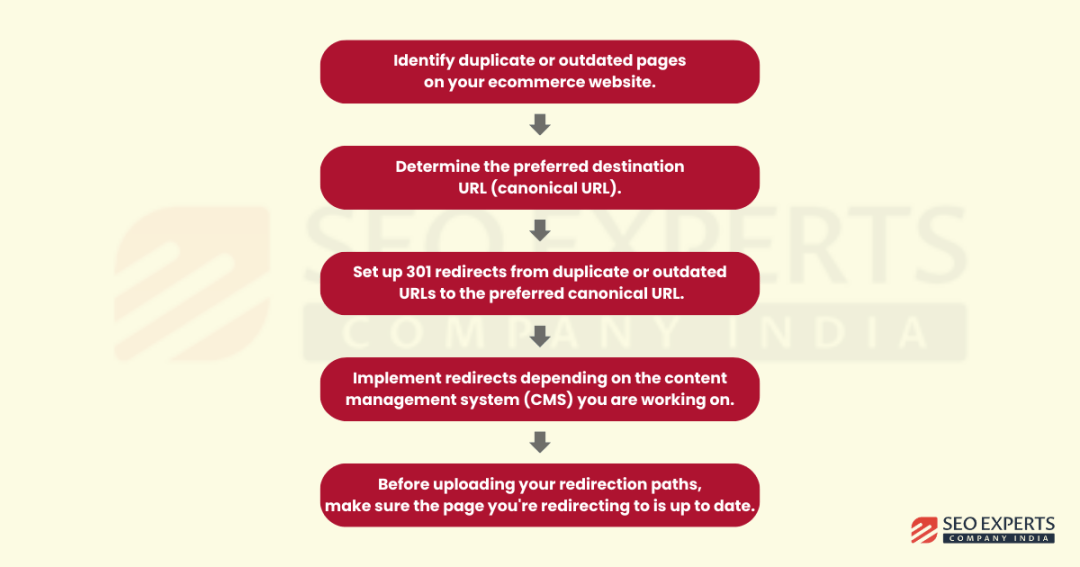Ecommerce Technical SEO is vital for the smooth functioning of ecommerce websites. It might not always be in the spotlight, but it’s a crucial piece of the search optimization puzzle. Factors like website structure, website speed, responsive design, etc., can heavily impact your ecommerce site’s rankings on Google.
With years of practical experience in the field, we have learned the significant role technical SEO plays in the success of online stores. In this article, we have shared constructive insights gained from optimizing numerous eCommerce websites.
Let’s dive into the article to kickstart your journey into technical SEO for ecommerce and unlock the full potential of your online store.
What is Ecommerce Technical SEO?
Technical SEO operates behind the screen to optimize your ecommerce website’s speed, security, product pages, navigation, mobile-friendliness, structure, etc. Optimizing technical aspects helps search engines easily crawl and index your website.
Why is Ecommerce Technical SEO Important?
Here are some practical reasons for you to invest in good Technical SEO practices for your eCommerce website:
Increase in Sales
By optimizing your eCommerce site’s technical elements, you make it easier for potential customers to discover your products, boosting its visibility and increasing sales potential. This ensures that your website captures the attention of more shoppers and drives higher conversion rates.
Improved Search Engine Visibility
Technical SEO optimizes your ecommerce website for various technical elements such as meta tags, internal links, website architecture, etc. Optimizing these elements helps search engines easily crawl, index, and understand your website, ultimately leading to improved search engine visibility. As your site becomes more visible, it naturally attracts more significant organic traffic, driving qualified leads to your website.
Reduction in Abandoned Carts
A well-optimized eCommerce website enhances user experience by simplifying the checkout process and improving the page speed and navigation. By introducing elements such as having fewer forms to fill out and offering guest checkout without signing up, eCommerce websites make it easier for visitors to complete the purchase, ultimately reducing cart abandonment rates.
Optimized Product Pages
Technical SEO is responsible for optimizing product pages. It ensures that search engines can easily discover and understand product pages, making them appear higher in search results. This involves optimizing elements like page titles, URLs, images with relevant keywords, and more. Later in this article, we’ll dig deeper into the various techniques used to optimize product pages for better search engine performance.
Manages Duplicate Content
Ecommerce websites struggle with duplicate content issues such as similar product descriptions, syndicated content (content published on multiple sites), etc. Technical SEO strategies help identify and manage duplicate content on ecommerce websites and ensure that each page serves its unique purpose.
Builds Brand’s Trust
Technical SEO is responsible for a secure and smooth shopping experience. Elements like SSL certificates assure customers of the safety of their data and payment information. Therefore, technical SEO is vital for ecommerce websites that want to build brand credibility and trust.
How to Perform Technical SEO for Ecommerce Websites?
We understand that technical SEO for an ecommerce website can sometimes sound like too much of an effort. In this section, we have tried to compile all the essential elements of technical SEO that you need to understand as an ecommerce store owner.
In addition to implementing these ecommerce technical SEO strategies, conduct regular Ecommerce site audit to ensure the smooth and effortless functioning of your ecommerce website.
Let’s get started with a few easy steps to help you out:
1. Website Architecture
For now, all you need to remember is that Ecommerce website architecture involves organizing product categories, subcategories, and individual products in a logical and hierarchical manner. It is an integral part of the technical SEO for ecommerce as it directly impacts user experience and search engine performance.
Here’s how you can optimize Website Architecture for your eCommerce website:
- Group Your Products: Organize your products into categories and subcategories. For example, group similar products under relevant categories like “women’s fashion,” “beauty and personal care,” “home and kitchen,” etc.

- Have Relevant Subcategories: Further, break down each category into more specific subcategories. For example, you can include “clothing,” “shoes,” “jewelry,” “watches,” etc. under the category “women’s fashion.”

- Have an Easy-to-Follow Navigation Menu: Your navigation menu should be simple to guide your visitors to desired products effortlessly. You can add dropdown menus for deeper categories, if necessary.

2. Website Page Speed
Page speed is critically important for ecommerce websites because it takes seconds for the users to jump to faster competitors to find similar products. Therefore, if your website takes ages to load, you might lose potential customers before they even see your products. It could mean fewer sales and even a drop in search engine rankings as Google prioritizes faster-loading websites.
You can use Google’s Page Speed Insights or GTmetrix to analyze your website’s speed.

Here’s how you can optimize Page Speed for your eCommerce website:
- Optimize Images: Resize and compress images on your website (product and homepage images) to make them load faster. Ensure that you choose an acceptable image format, like JPEG, PNG, GIF, WebP, or AVIF, for your e-commerce website pictures to maintain quality while improving site speed.
- Enable Browser Caching: When visitors come to your site, the browser stores static files like images, CSS, and Javascript on their devices. So, when they return, the browser quickly retrieves these files from its local cache instead of requesting them from the server every time. So, enabling browser caching is like giving a shortcut to your favorite website, making it load faster!
- Utilize Content Delivery Network (CDN): Use a CDN (Content Delivery Network) to spread your website’s content, like images and pages, to servers all over the world. This means when someone visits your site, they will get it from the closest server, making things load faster regardless of the location.
- Reduce HTTP Requests: It simply points to having fewer elements on your website that ask for information. Therefore, we recommend you to combine CSS and JavaScript files and get rid of unnecessary plugins or widgets that your website doesn’t require. It’s basically like decluttering your site for a faster-loading website and an effortless shopping experience.
3. URL Structure
URL structure is an essential element of technical SEO that directly impacts search engine rankings and user experience. If you have short, concise, and relevant URL structures for each product on your website, it helps search engines crawl and index your pages better.
Keep the following points in mind while optimizing URL structure for your eCommerce store:
- It is a good practice to include the product name in the URL. For example, “apple.com/airpods-pro/”
- Since ecommerce websites sell various products, we advise you to implement canonical tags on URLs. These tags help specify the preferred version of URLs and avoid duplicate content issues.
- Keep the URLs short and relevant.
- Use hyphens to separate different words.
4. Schema Markup
Schema Markup or Structured Data for ecommerce is a way of organizing and marking up product information in a format that search engines can easily read and interpret. It improves the accuracy of Google’s understanding of your product information, reviews and ratings, prices, availability, etc.
Much of this work is likely done for you if your store lives on Shopify, BigCommerce, or another large eCommerce platform. However, we still advise you to test your site’s technical SEO on a regular basis and make improvements where needed.
Here’s how you can optimize Structured Data for your eCommerce site:
- Apply Product Schema: Use Product schema markup to provide detailed information about your products to Google, such as name, price, availability, and reviews.
- Apply Review Schema: Utilize Review schema markup to help search engines understand your website’s product reviews and ratings.
- Apply Breadcrumb Schema: Implement Breadcrumb schema markup to assist search engines in understanding the structure and hierarchy of pages on your website.
- Apply FAQ Schema: Implement FAQ schema markup to highlight the frequently asked questions and answers related to your products or services.
5. Duplicate Content
As it implies, duplicate content refers to identical or very similar content that appears on multiple pages of a website or across different websites. Duplicate content is very common for ecommerce sites and can arise from similar product descriptions, category pages, session IDs, URL parameters, etc.
For example, if you sell a jacket in different sizes and colors, each version may have a different URL, leading to duplication.
Here’s how you can optimize Duplicate Content for your eCommerce store:
Use Canonical Tags: Use canonical tags to inform search engines about the preferred version of the page, especially for product variations or similar content. To implement canonical tags, first, decide which version of the page you want search engines to prioritize. Then, in the HTML code of the duplicate pages, add a canonical tag pointing back to the main URL.

- Apply 301 Redirects: 301 redirects help with duplicate content issues by pointing users and search engines from one URL to another, indicating that the original URL has been permanently moved. This technique consolidates link equity from multiple pages to the preferred page on a website, preventing users from accessing duplicate content.

- Use Google Search Console for URL Parameter Handling: URL parameters can cause duplicate issues on ecommerce sites, particularly with features like filtering options. However, you can address this issue by setting up URL parameter handling in Google Search Console. This helps search engines distinguish between important pages and variations of the same content.
- Write Unique Product Descriptions: Make it a habit to write original and unique product descriptions for each product on your website. This can positively impact your duplicate content issues. Highlight your product’s features, benefits, and unique selling points while writing the description.
6. Broken Links Optimization
Broken links on an ecommerce website are the ones that lead to non-existent or 404 error pages. They negatively impact user experience and harm SEO efforts by preventing visitors and search engines from accessing the content they are looking for. Regularly monitor and ensure that links to your site’s product pages, category pages, and other important sections are working properly.
You can identify broken links by using tools like Screaming Frog or Google Search Console.

Here’s how you can optimize Broken links for your eCommerce store:
- Apply Redirects: For pages that have been relocated or taken down, implement 301 redirects to guide visitors and search engines to relevant, alternate pages. Avoid implementing redirects to the homepage; if there’s no suitable alternative, simply remove the link.
- Request a Fix in Case of Broken External Links: In case of a broken external link, contact the website owner and request them to update, fix, or remove the broken link.
7. Website Security
Ensuring your ecommerce website is secure is essential because it’s where customers share sensitive information like personal details and payment information. With a secure site, customers feel confident about their data, encouraging them to shop comfortably.
Here’s how you can optimize Website Security for your eCommerce website:
- Choose a Secure Web Hosting Service: Ensure that the web host or ecommerce platform that you choose offers reliable security measures such as firewalls, SSL support, IDS (Intrusion Detection System), security audits, etc.
- Get an SSL Certificate: An SSL (Secure Sockets Layer) certificate helps encrypt the data between your ecommerce website and the user’s web browser, establishing a secure connection. SSL reassures users that your site is secure with the closed padlock symbol and “HTTPS” in your web address.
To ensure your ecommerce website is secure, it’s important to buy SSL certificates from a reputable source, as they are a mandatory requirement.

- Use Third-party Encrypted Checkout Pathways: For payments, use a secure checkout system provided by trusted third-party services, such as PayPal, Apple Pay, Stripe, etc. These are standard for ecommerce sites and ensure that payment information is encrypted and protected. This extra layer of security helps prevent hackers from intercepting and stealing sensitive information while your customers shop online.
8. Optimize XML Sitemap
XML sitemap is an essential element of Technical SEO for ecommerce as it directly impacts how search engines crawl and index your website. XML sitemaps help search engines reach your ecommerce website’s pages, ensuring the most important pages are crawled and indexed efficiently.

Here’s how you can optimize XML Sitemap for your eCommerce site:
- Include all Product Pages: Optimize your XML sitemap to include URLs of all the product pages, including the color and size variations.
- Highlight Important Pages: Prioritize important pages such as product categories, new arrivals, and best sellers to make sure they are immediately crawled and indexed.
- Add Image Tags to Your Sitemap: Image tags provide information about your product images to search engines. This helps boost your products’ visibility in search results, making it easier for potential customers to find them.
- Limit Your Sitemap to 50,000 URLs and 50 MB: Keep your sitemap under 50,000 URLs and 50 MB to ensure it loads efficiently. Try to limit to 10,000 URLs if possible, as smaller sitemaps may get indexed faster and more thoroughly.
- Regularly Update Your XML Sitemap: Updating your XML sitemap is a brilliant practice as it helps add new product pages and remove out-of-stock or discontinued products.
- Submit Your Sitemap: Once you have completed and optimized your sitemap, submit it to search engines using Google Search Console or Bing Webmaster tools to ensure they’re aware of all your website pages.
9. Mobile Friendly Website
Having a mobile-friendly design for your ecommerce website is super important. It ensures an effortless shopping experience for customers across all devices, like smartphones and tablets. Because many people use their mobile phones to browse and shop online, having a mobile-responsive website is a must for ecommerce store owners. By prioritizing mobile friendliness, you make it easier for customers to browse, find products, and complete purchases on your site, ultimately boosting sales and customer satisfaction.
To check if your ecommerce website is mobile-friendly or not, you can use Google’s mobile-friendly test tool.
Here’s how you can optimize your eCommerce website for Mobile responsiveness:
Have a Responsive Design: Optimize your ecommerce website to have a responsive design so that it automatically adjusts layout, content, CTAs, and other elements to quickly adapt to different screen sizes (smartphones, tablets, etc.).

- Consider the Mobile User’s Perspective: For a minute, be a typical smartphone user navigating the website with their thumb. See, where should the CTAs be placed for easy clicking? How big should these buttons be to make navigation smooth? Can you incorporate gestures like swiping to make the shopping experience smoother? These are some important considerations to make while optimizing your ecommerce website for mobile users.
- Have Mobile-Friendly Content: Optimize content for mobile devices by using larger fonts and concise product descriptions to make it easier for visitors to read and navigate on smaller screens.
- Test Your Ecommerce Website: Regularly test your website by running it across different devices and screen sizes. It helps identify any navigation or usability issues and ensures a hassle-free shopping experience for visitors.
Wrapping Up
In conclusion, optimizing your ecommerce website for technical SEO is essential to making your website visible and accessible to search engines. It controls behind-the-scenes elements of your website to enable its smooth functioning and provides an effortless shopping experience to the visitors.
With an experience of 12+ years, our Ecommerce SEO Company excels in providing SEO strategies tailored to skyrocket your ecommerce website’s overall performance.
So, if you’re ready to take your online store to new heights, why wait? Let us be the solution your website is seeking. Reach out to us today and let our team help you dominate the world of ecommerce SEO.





